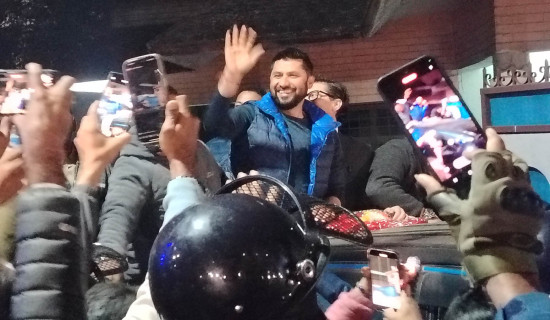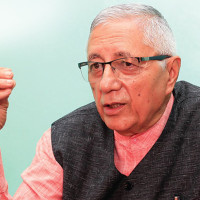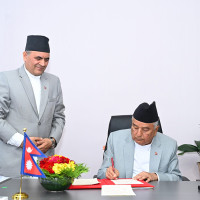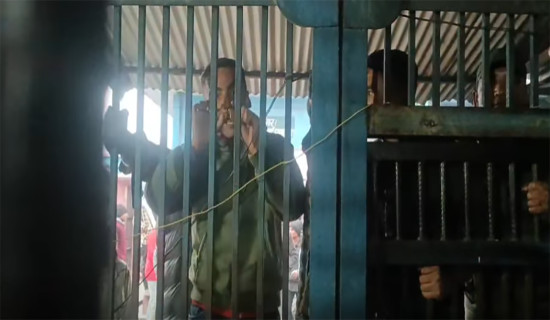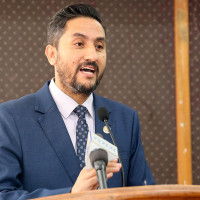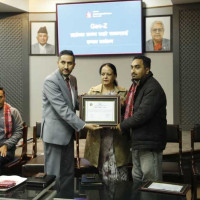- Saturday, 20 December 2025
Where vultures are treated like humans
By Bomlal Giri,Nawalpur, Nov. 20: Hundreds of vultures perch in flocks on trees, waiting for the moment they will be fed carcasses. Nearby, a small cage-like structure resembling an aviary holds three vultures in pitiable condition. One is blind while the other two are grounded by wing injuries that make them unable to fly.
These vultures are being treated at the Jatayu Restaurant in Kawasoti-13, Nawalpur. Among these, the Kawasoti Centre also serves as a treatment facility for injured and sick vultures, including those rescued from the wild.
Yam Bahadur Nepal, a caretaker who has spent 20 years working for vulture conservation, explained that the blind vulture was rescued from Jajarkot, and one of the grounded vultures was brought from Nepalgunj. The third became ill locally.
“Despite four years of continuous treatment, the blind vulture has not regained its sight and the ones with wing injuries are still unable to fly,” said Nepal. They will now have to be kept and cared for in the aviary for the rest of their lives, he added.
The three vultures, two Himalayan vultures and one Slender-billed vulture were on the brink of death when they arrived. “We hydrated them with saline water, provided vitamins and fed them enough meat, which revived them to a certain extent, but they are not fit to return to the wild. Releasing them would mean certain death,” according to Nepal.
These vultures were not born disabled but fell ill during their migratory journeys from the mountains. Vultures often suffer injuries or fall sick due to starvation, electrocution, human attacks, hailstorms or even fights among themselves, he informed.
The Jatayu Restaurant has treated nearly 200 vultures to date. Last year, it saved six vultures in Nawalpur which became ill after eating carcasses poisoned by wildlife predators. “Six vultures had already died and six more were on the verge of death. We brought the ill vultures and treated them. They recovered and were eventually released back into their natural habitat,” Nepal said.
DB Chaudhary, chairperson of the Jatayu Restaurant Management Committee and ornithologist, said that the facility also treats other bird species, such as eagles and owls. “If any raptors fall ill in Nepal, locals inform us and we immediately rescue and treat them,” he said.
Although there are seven vulture feeding centres across Nepal, Kawasoti’s Jatayu Restaurant is the only one equipped with medical treatment.
“Treating birds is very challenging due to the lack of proper technology, expertise and trained personnel,” Chaudhary said. Diagnosing diseases and determining the correct medication and diet require veterinary guidance, he said.
Once treated, the vultures are reintroduced into the wild. “We move them from a small aviary (rescue centre) to a larger one (release area) for flight practice. Once we are confident, they are released into their natural habitat,” Chaudhary added.
When the restaurant was established in 2005, only 72 vultures of seven species were recorded in the area. By 2023, the count had increased to 517 vultures across eight species. Every feeding session is an opportunity to count the vultures and last Sunday’s tally recorded 213 vultures, according to conservationist Dev Bahadur Rana.
The number is expected to rise as vultures migrating from the Himalayas and Siberia arrive in the coming months. Last year, around 100 nests were recorded in the area, indicating a steady increase in breeding activity.
Vultures primarily nest and breed in community forests such as Jyotikunj, Lamichaur and Namuna Community Forests in Kawasoti.



